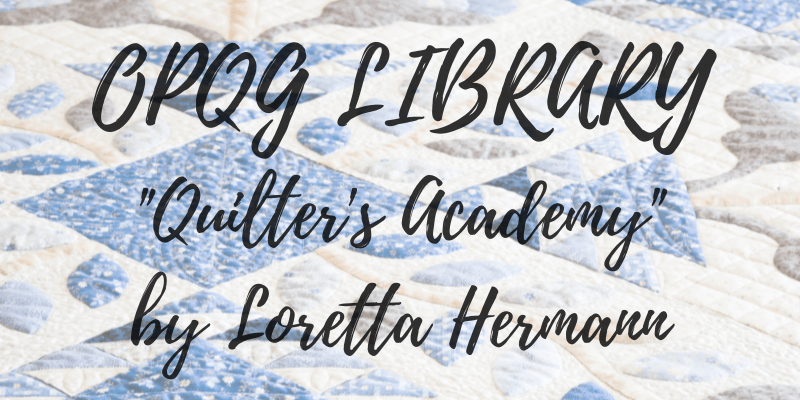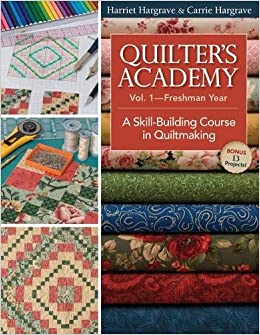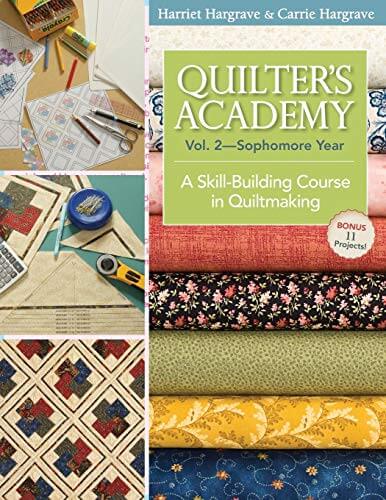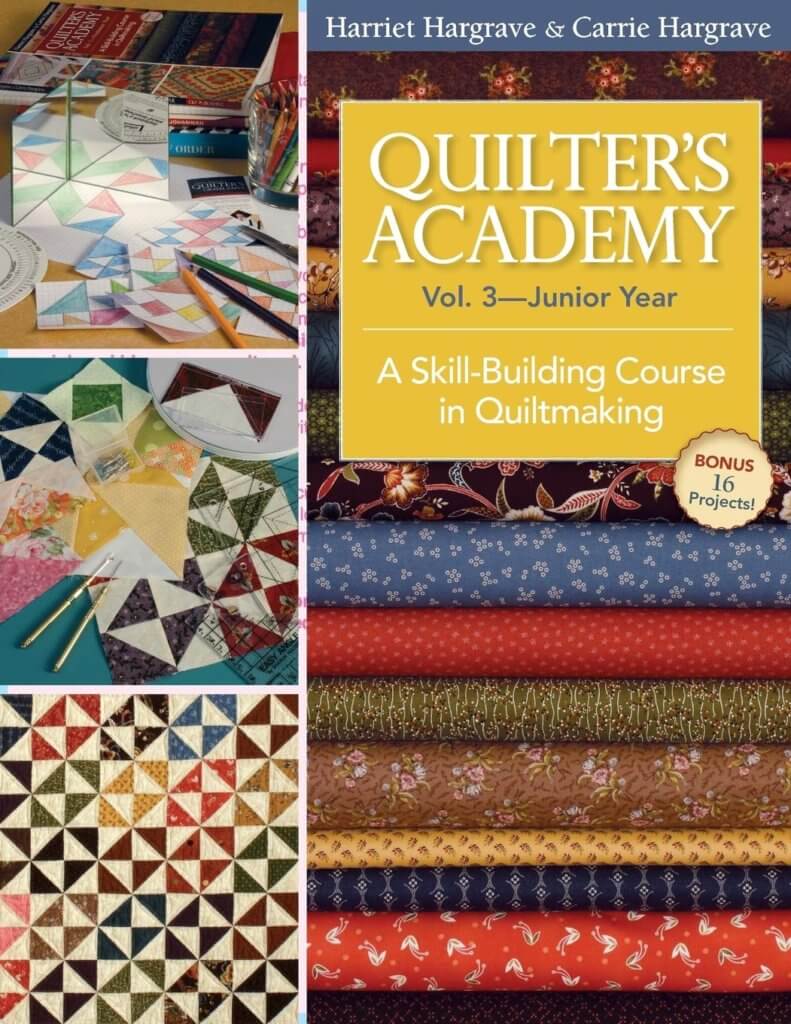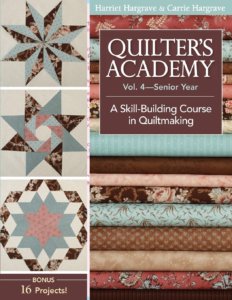by Loretta Hermann, OPQG Librarian
Whether you are a beginning quilter or an experienced quilter, this series of Quilter’s Academy, written by Harriet and Carrie Hargrave, will have strategies, tips, instructions and projects for you.
There are six books, each with lessons and projects building on quilting skills. Each book in the series is like a year of college courses, from freshman to Ph.D. candidate. The freshman year starts with the basics, and skills are developed through the senior year, where you learn the elements of drafting or designing a quilt. Volumes five and six deal with challenging designs such as medallion and others for which patterns are seldom found.
This volume begins with the basic tools and equipment needed for making a quilt. It includes tips on how to set up your studio or sewing room efficiently. A controversial topic amongst quilters is to prewash or not to prewash their fabric. The advantages and disadvantages of prewashing fabric are explained and will help you to make that decision for individual projects. The importance and reasons for cutting, measuring and sewing accurately are explained.
Drafting with base grids is introduced.
Maybe you just need a refresher course on a specific skill as I did with mitering the corners on my current project.
Squaring the quilt, mitered borders, and preparing the quilt for binding are covered in detail before the final exam.
This volume has 11 projects to make using the skills learned. Answering the questions in the final exam prepares you to make a quilt with your own calculations, grid, figure the yardage needed and make accurate strip sets.
You will be amazed at the more complex quilts you can make while still using the basic strips and squares learned in the first volume.
You may want to expand tools and equipment in your sewing area from the suggestions. Basic maintenance of your machine, as well as checking the tension, are covered. The first chapter explains different kinds of needles and their usees. Types of thread and rulers with helpful charts are also included.
I found the lesson on types of fabric, colorfast issues, and fabric preparation to be most beneficial. The designs are more complex with diagonal settings, cornerstones, and utilizing the sashing as a design element. Detailed instruction on how to figure the quilt size and figuring the yardage is included. Ideas on collecting, storage and organizing fabric will help quilters build their stash no matter their skill level. This volume ends with making a diagonal quilt using the skills learned as a final exam.
The design opportunities and projects in this volume focus on triangles. Not only will you learn different methods of making half-square triangles, but also flying geese, three-piece and quarter-square triangles, partial seams, stars, and prairie points. Each volume adds to the discussion of your workspace. In this volume, you’ll also find tips on lighting and electrical needs.
You will want to “sharpen” your skills in using the rotary cutter to make accurate triangles. The use of templates and foundation piecing are introduced. All projects highlight the specific skill you are learning.
Want to know which batting to use for different projects and quilts? The chapter on the various types of batting and the pros and cons of each fiber will help you with the answer. For the Junior Final, various quilting designs are pictured for you to choose the best one to finish the final project.
The Senior Year takes you into the most exciting of all designs—stars. This volume explores stars made using 60-degree and 45-degree angles, as well as hexagons, tumbling and log cabin blocks, partial seams applications and more. If you work through each volume in the series, by the time you get to the Senior Year, you will be making those stunning, challenging quilts you never thought you could make. There is a bonus of 17 quilts and projects in this volume.
About the authors: Harriet and Carrie Hargrave are a mother-daughter team who are both well versed in the art of quilting. Harriet started quilting seriously in 1974. In 1981, Harriet opened her quilt shop, Harriet’s Treadle Arts. Her specialties at the time were free-motion embroidery, machine arts, and machine quilting. She has written several books on machine quilting. Hargrave is responsible for a variety of products pertaining to machine quilting and has developed batting with Hobbs Bonded Fibers and designed fabric for P&B Textiles. Her daughter, Carrie, has been involved in quilting all her life. She was only four years old when Harriet opened her shop.
When Hargrave decided to close the shop after 25 years, as well as traveling and teaching, Carrie took over and continues to run the store. All the quilts in the series were pieced and quilted by the Hargraves.
The first four volumes of this series are available in the OPQG Library to check out and try at home. You may want to do the whole course to improve your overall quilting skills. If not, it is a great reference to work on something specific that is puzzling on your current project.

